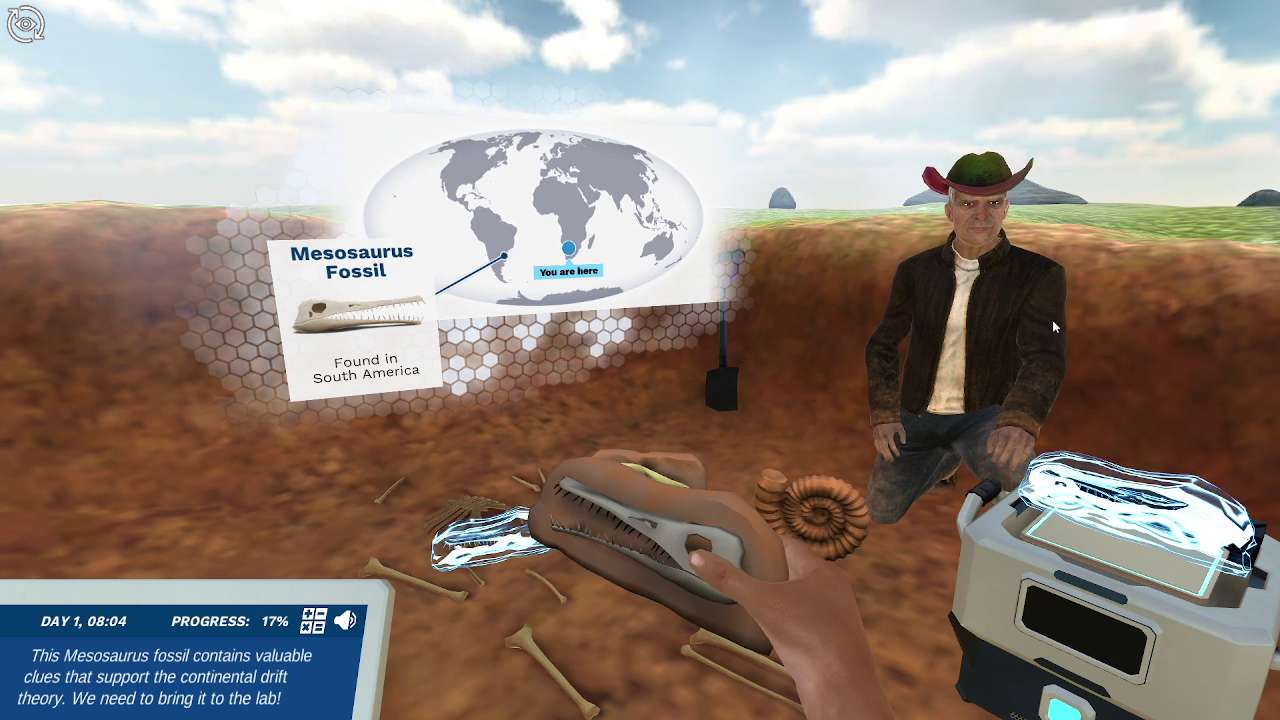Heading 1
Heading 2
Heading 3
Heading 4
Heading 5
Heading 6
Lorem ipsum dolor sit amet, consectetur adipiscing elit, sed do eiusmod tempor incididunt ut labore et dolore magna aliqua. Ut enim ad minim veniam, quis nostrud exercitation ullamco laboris nisi ut aliquip ex ea commodo consequat. Duis aute irure dolor in reprehenderit in voluptate velit esse cillum dolore eu fugiat nulla pariatur.
Block quote
Ordered list
- Item 1
- Item 2
- Item 3
Unordered list
- Item A
- Item B
- Item C
Bold text
Emphasis
Superscript
Subscript
About This Simulation
Solve the continental mystery discovered by Alfred Wegener. Piece together the jigsaw puzzle of continental drift by investigating different forms of evidence, and unravel the story they tell about how the continents have moved over millions of years.
Learning Objectives
- Identify evidence that supports the hypothesis of continental drift
- Apply the evidence identified to develop the continental drift theory
- Calculate how fast plates have moved in the past and present to predict their future movement and locations
About This Simulation
Lab Techniques
Related Standards
- HS-ESS1-5
Learn More About This Simulation
What can fossils tell us about the position of the continents millions of years ago? In this simulation, you will investigate the different forms of evidence that support the continental drift theory and use your knowledge to demonstrate where the continents were located in the past, and where they will move in the future.
Collect geological evidence
Head on an expedition, exploring different mountain ranges across the world to collect geological samples, such as rocks and fossils. You will experience the journey of Alfred Wegener and explore the evidence he uncovered over a century ago. You will hypothesize what this may tell us about the continents' past locations, before heading to the lab to test your hypothesis.
Recreate Pangaea In the lab, you will explore how your evidence relates to the continental drift theory. You will visualize your evidence in a 3D world map to see what it tells us about the distribution of mountains, animals, and ice sheets millions of years ago. Then, you will use this information to move continents across the world to piece together the ancient supercontinent, Pangaea. Use geological, fossil, and climatic evidence to construct the same argument that Alfred Wegener made more than one hundred years ago. See for yourself how the evidence converges to his conclusions through an interactive activity.
Calculate the rate
By the end of this simulation, you will be able to calculate the rate the continents are moving by exploring the distance they have traveled over the past millions of years. How far do you think Africa will travel in 50 million years?
For Science Programs Providing a Learning Advantage
Boost STEM Pass Rates
Boost Learning with Fun
75% of students show high engagement and improved grades with Labster
Discover Simulations That Match Your Syllabus
Easily bolster your learning objectives with relevant, interactive content
Place Students in the Shoes of Real Scientists
Practice a lab procedure or visualize theory through narrative-driven scenarios


FAQs
Find answers to frequently asked questions.
Heading 1
Heading 2
Heading 3
Heading 4
Heading 5
Heading 6
Lorem ipsum dolor sit amet, consectetur adipiscing elit, sed do eiusmod tempor incididunt ut labore et dolore magna aliqua. Ut enim ad minim veniam, quis nostrud exercitation ullamco laboris nisi ut aliquip ex ea commodo consequat. Duis aute irure dolor in reprehenderit in voluptate velit esse cillum dolore eu fugiat nulla pariatur.
Block quote
Ordered list
- Item 1
- Item 2
- Item 3
Unordered list
- Item A
- Item B
- Item C
Bold text
Emphasis
Superscript
Subscript
A Labster virtual lab is an interactive, multimedia assignment that students access right from their computers. Many Labster virtual labs prepare students for success in college by introducing foundational knowledge using multimedia visualizations that make it easier to understand complex concepts. Other Labster virtual labs prepare learners for careers in STEM labs by giving them realistic practice on lab techniques and procedures.
Labster’s virtual lab simulations are created by scientists and designed to maximize engagement and interactivity. Unlike watching a video or reading a textbook, Labster virtual labs are interactive. To make progress, students must think critically and solve a real-world problem. We believe that learning by doing makes STEM stick.
Yes, Labster is compatible with all major LMS (Learning Management Systems) including Blackboard, Canvas, D2L, Moodle, and many others. Students can access Labster like any other assignment. If your institution does not choose an LMS integration, students will log into Labster’s Course Manager once they have an account created. Your institution will decide which is the best access method.
Labster is available for purchase by instructors, faculty, and administrators at education institutions. Purchasing our starter package, Labster Explorer, can be done using a credit card if you are located in the USA, Canada, or Mexico. If you are outside of North America or are choosing a higher plan, please speak with a Labster sales representative. Compare plans.
Labster supports a wide range of STEM courses at the high school, college, and university level across fields in biology, chemistry, physics, and health sciences. You can identify topics for your courses by searching our Content Catalog.















